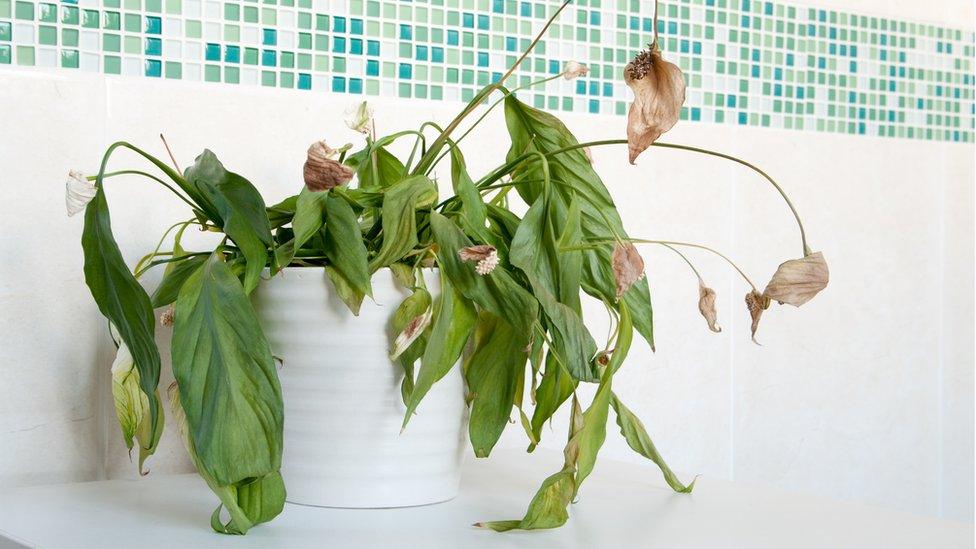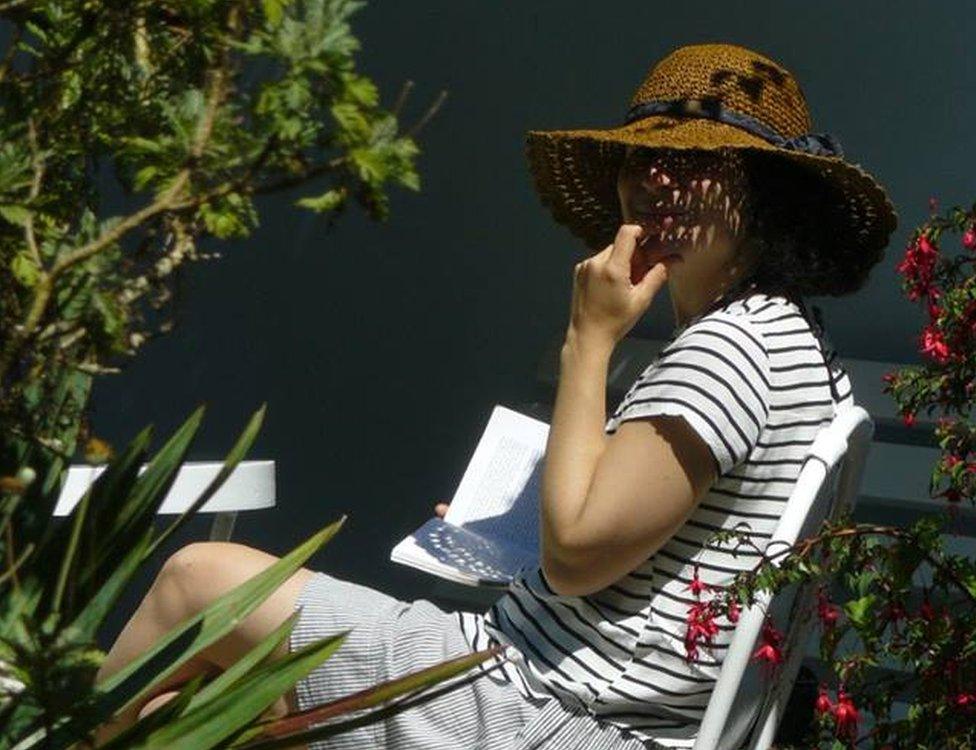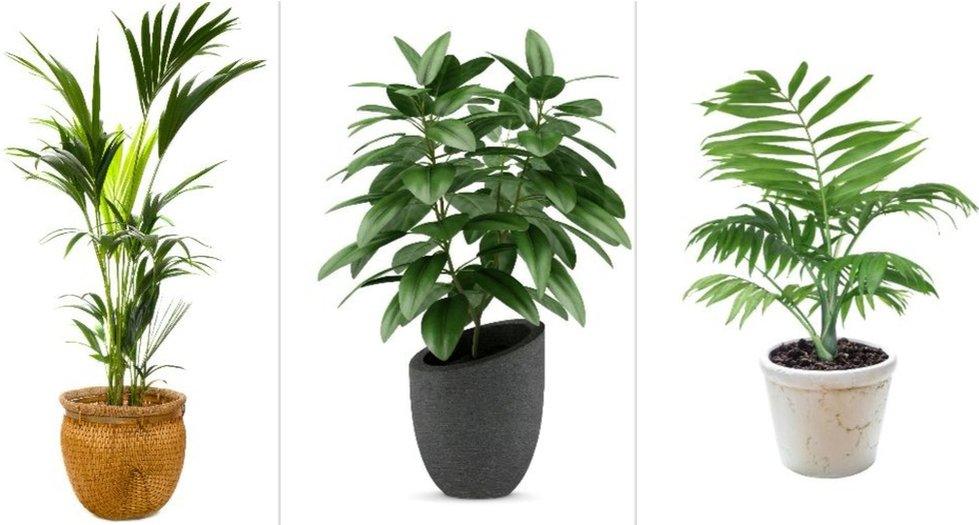Heatwave: How to keep your beloved plant alive
- Published

Don't let your lovely plants meet the same fate as this spathiphyllum (peace lily)
If you think you're suffering during this heatwave, spare a thought for your beloved houseplants. Cast your eye over them - how are they doing? Parched? Over-watered? Or surviving?
For people living in a rented house or a flat with a cupboard-sized balcony, buying a few houseplants has become an increasingly popular way to make home feel more personal.
Pinterest and Instagram accounts such as Urban Jungle Blog are full of pictures of beautifully curated plant-filled rooms.
And earlier this year, a national survey in the US indicated gardening by people aged under-35 had reached an all-time high, external.
Yes, for some people, plants are basically their babies.
But with this summer bringing unfamiliar weather territory to the UK, some plant parents are a bit panicked.
With increased temperatures indoors as well as out, what can you do to keep your beloved greenery alive until the rainy British summer we know and love returns?
Allow Instagram content?
This article contains content provided by Instagram. We ask for your permission before anything is loaded, as they may be using cookies and other technologies. You may want to read Meta’s Instagram cookie policy, external and privacy policy, external before accepting. To view this content choose ‘accept and continue’.
We asked Abby Jamet, who works for a London garden design company, for her top tips.
"Summer is when plants are trying to grow and blossom flowers - but this year, the extreme weather is challenging them, forcing them to divert their energy to cope," she said.
"Houseplants are very receptive to light and moisture levels, so increased and prolonged exposure to sunlight now threatens them, as well as things like air-conditioning or homes that are hotter than usual."
Five ways to care for your plants in hot weather:
Get to know your plants. Find out their names and start googling. Do they like direct sunlight or prefer shade? Do they like humid or dry conditions? Even if you water it perfectly, if your plant is living in the wrong conditions, it won't thrive. For example, tropical plants, such as rubber plants, kentia, ficus and some ferns, prefer humidity - but Mediterranean plants, such as thyme and lavender, prefer dry air
Check their location in your house - if they are spending hours in direct sunlight, think about whether this is their ideal spot
In hotter weather, most plants will need more water and probably twice a day. Don't waste water by watering them inefficiently or incorrectly. Aim the nozzle of your watering can at the soil, not the leaves. Use room-temperature water - cold or hot water will shock them. Do it in morning or evening, but not in the middle of the day when the water will evaporate quickly. Roots should grow down, not up - but if watered in sunlight, the roots will travel upwards in search of the evaporating water. Soak the soil and leave it for 10-15 minutes. If the water is absorbed, water it again

Abby Jamet, who works at a garden design company, says the heatwave is challenging many plants in the UK
If your plant looks a bit sad, try feeding it with some leftover tea leaves, which are rich in nitrogen, inside your watering can
If you have small garden shrubs or large potted plants on a balcony, water them thoroughly a few times a week, rather than a little every day. For thirsty outdoor plants, adding a few dead leaves on the topsoil will create an insulating layer so that moisture doesn't evaporate. If they are south-facing, water morning and evening to keep them moist
What if they're already parched?
You need to soak the plant to rehydrate it. The soil will probably repel water at first, so add some water, allowing the roots to absorb it, wait, then add more. Eventually, the water will sink in
Or you could sit the plant in a bowl of water for 15 minutes
What to avoid doing:
Don't sprinkle them for minutes on end. Instead, soak the soil then leave it

That's more like it - happy house plants
Don't let plants sit in water - the roots will rot and flies could lay their eggs there. If you need more drainage, you can put pebbles at the bottom of the pot
Don't panic about succulents or cacti - they love hot, dry weather. Check they're not parched - but don't fall into the trap of overwatering them
What if I'm going away for the weekend or on holiday?
A drip feeder made from a plastic bottle should keep them going.
Cut a small hole in a plastic bottle, fill the bottle with water, and then push it into the soil. The liquid will drip through and feed them.
Warning signs:
If leaves are wilting, drooping, or changing colour, it's a sign that the plant needs more attention
Most plants die from too much love - don't drown them in water, or let them sit in water. Some leaves develop orange spots, or rust, if they are being overwatered
But above all, Abby says: "Don't panic. The heatwave probably won't kill them. If you water them often and thoroughly, pay attention to them, and love them, they'll be fine."
By Georgina Rannard, UGC and social news